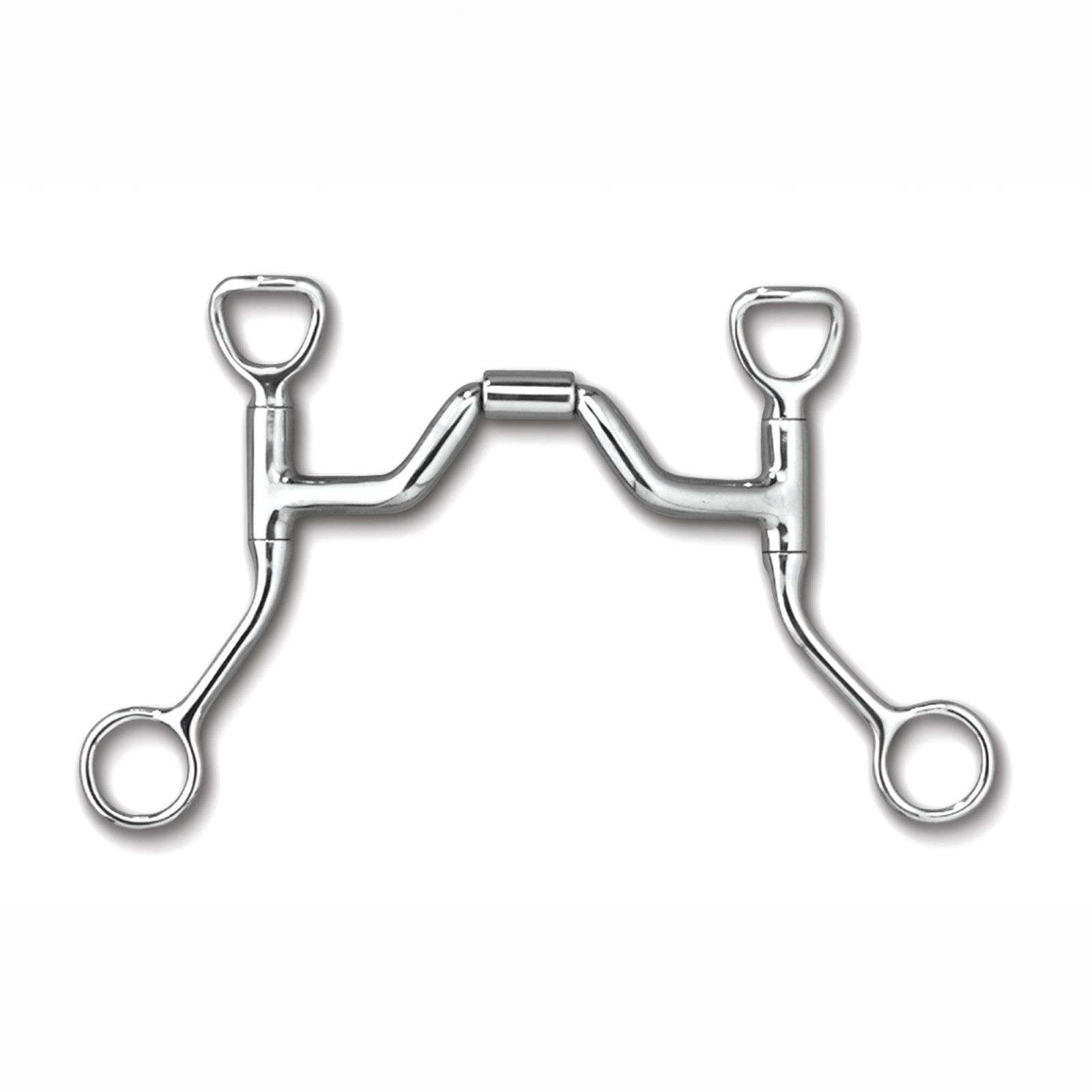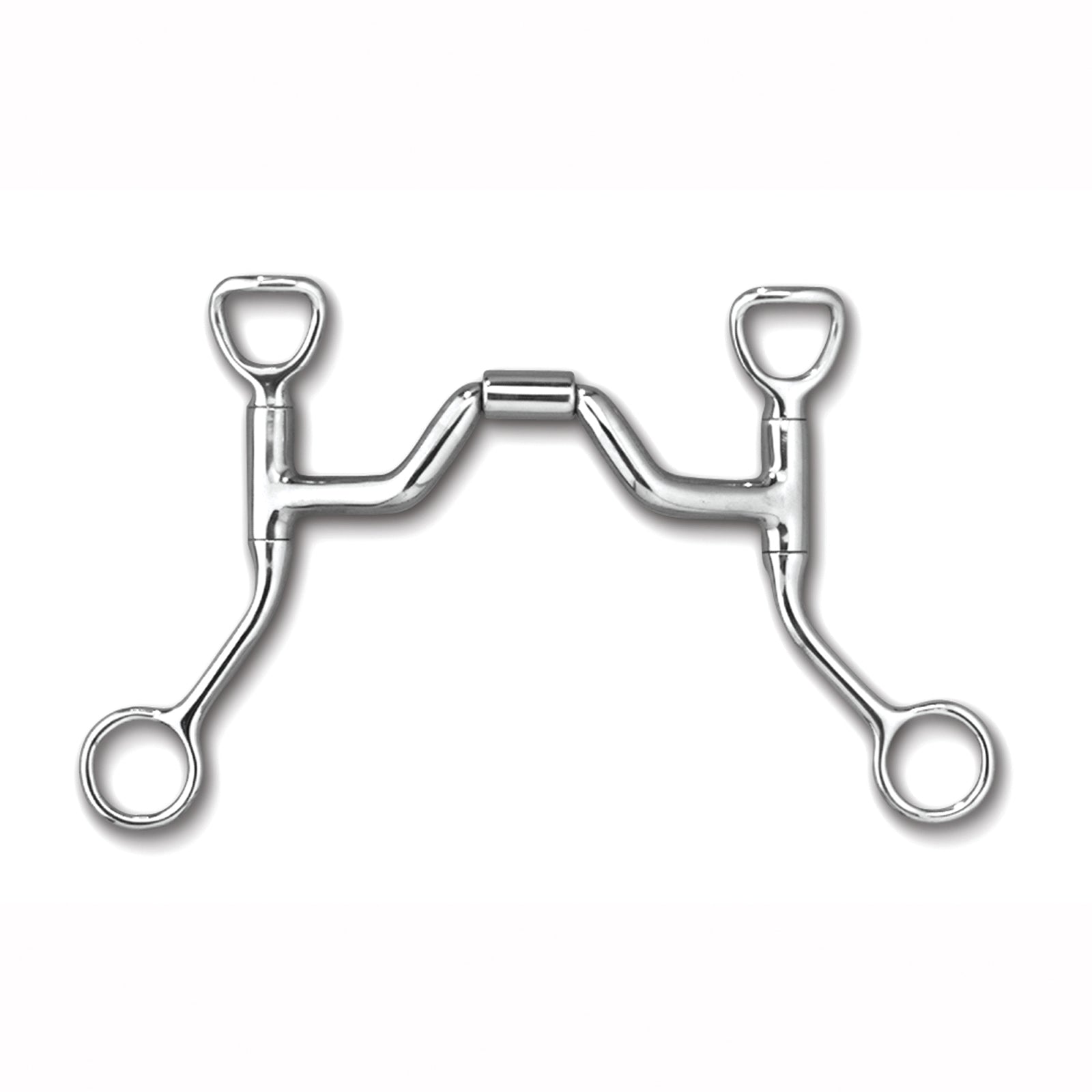Myler HBT Shank Medium Wide Ported Barrel MB 33 Bit
-
DetailMyler Stainless Steel 5" HBT Shank, MB 33 Medium Wide Ported Barrel, Level 3
The MB 33 is the mildest Myler mouthpiece in terms of tongue pressure. The generously wide port allows room for the tongue to pass almost completely under the bit. Because this mouthpiece does not rotate on to the tongue and the port is wide, it applies little to no tongue pressure, working primarily off the lips and bars. The port on this mouthpiece is only 1 " high, so it will apply little to no palate pressure. Because the MB 33 offers such a high degree of tongue relief, the horse that goes well in this mouthpiece has a trustworthy and consistent disposition, and is trained to work off the leg and seat as well as the hands. Sweet iron mouthpiece oxidizes and encourages salivation.
Features:
- Independent Side Movement
- Sweet Iron Mouthpiece
- Curved Mouthpiece
- Copper Inlay
The 5" HBT shank is stainless steel and slightly curved back, with a flat-top purchase and a rein ring. The mouthpiece has a fixed attachment. The HBT shank has the patented Independent Swivel Cheek, where the purchase, mouthpiece and shank all move independently of each other. The purchase is slightly angled away from the cheek to avoid rubbing. It has an indirect (curb) rein action designed to be used with a curb strap which attaches to the purchase. The HBT shank uses the combination of the fixed cheek and fixed rein to apply pressure to the mouth, chin and poll.Legal Disclaimer - This product contains chemicals known to the State of California to cause cancer and birth defects or other reproductive harm. For more information, go to www.p65warnings.ca.gov.
-
Customer ReviewsNo comments
Enjoy a 5-year warranty with every purchase!
💰 100% Money-Back Guarantee: Love it or return it within 60 days.
📩 24/7 Support: We're here to help anytime.
🔒 Secure Payments: Your data is protected with advanced SSL encryption.
🌈 After every order, we give 10% of the profit to Save the Children, supporting the most isolated and neglected rural children in Europe since 1932.

 USD
USD




